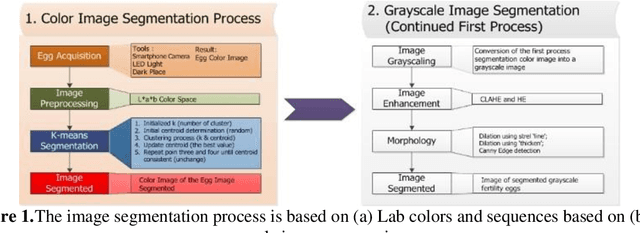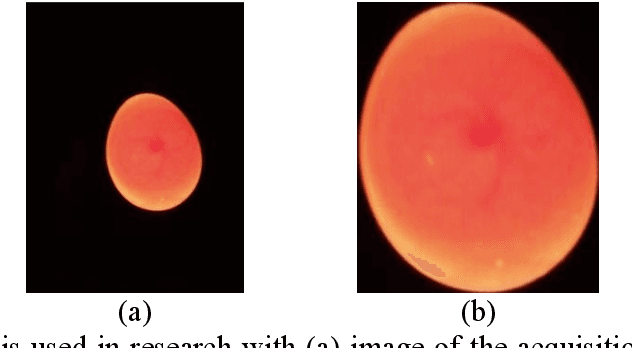K-means Segmentation Based-on Lab Color Space for Embryo Egg Detection
Paper and Code
Mar 03, 2021



The hatching process also influences the success of hatching eggs beside the initial egg factor. So that the results have a large percentage of hatching, it is necessary to check the development of the embryo at the beginning of the hatching. This process aims to sort eggs that have embryos to remain hatched until the end. Maximum checking is done the first week in the hatching period. This study aims to detect the presence of embryos in eggs. Detection of the existence of embryos is processed using segmentation. Egg images are segmented using the K-means algorithm based on Lab color images. The results of the images acquisition are converted into Lab color space images. The results of Lab color space images are processed using K-means for each color. The K-means process uses cluster k=3, where this cluster divided the image into three parts, namely background, eggs, and yolk eggs. Yolk eggs are part of eggs that have embryonic characteristics. This study applies the concept of color in the initial segmentation and grayscale in the final stages. The results of the initial phase show that the image segmentation results using k-means clustering based on Lab color space provide a grouping of three parts. At the grayscale image processing stage, the results of color image segmentation are processed with grayscaling, image enhancement, and morphology. Thus, it seems clear that the yolk segmented shows the presence of egg embryos. Based on this process and results, K-means segmentation based on Lab color space can be used for the initial stages of the embryo detection process. The evaluation uses MSE and MSSIM, with values of 0.0486 and 0.9979; this can be used as a reference that the results obtained can indicate the detection of embryos in egg yolk.
 Add to Chrome
Add to Chrome Add to Firefox
Add to Firefox Add to Edge
Add to Edge